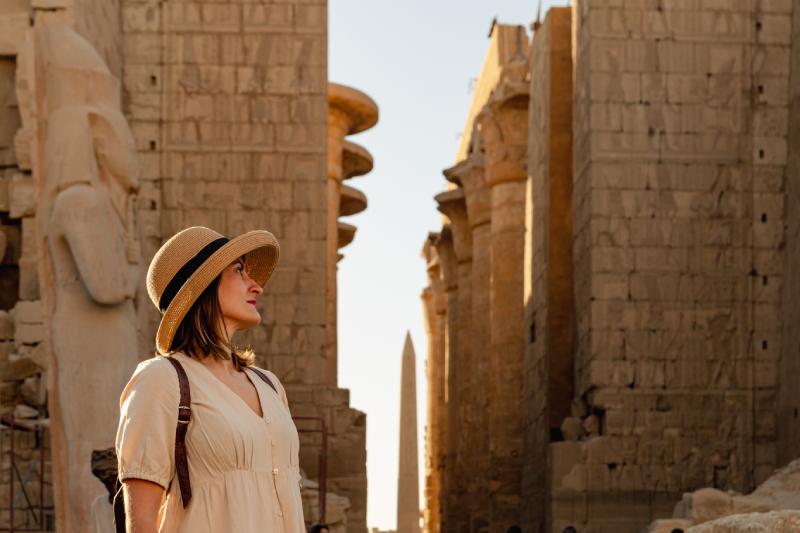
Egypt is our favorite place where history and culture come alive in the most magical way. From the towering pyramids to the peaceful Red Sea coast, Egypt has something for every kind of traveler. Whether you're drawn to ancient ruins, vibrant markets, or breathtaking natural beauty, you're in for a real treat.
Known as the “Gift of the Nile,” Egypt is packed with stories of pharaohs, gods, and timeless wonders that have shaped our world. It’s a place that sparks curiosity and invites you to explore its many secrets.
It's the perfect mix of history, culture, and natural beauty. Egypt isn’t just a place, it’s a living museum that brings the ancient world to life. From the awe-inspiring Great Pyramids to peaceful Nile cruises, every moment here feels like stepping into a storybook.
What we love most is the variety. One day you’re exploring busy markets in Cairo, the next you’re drifting past temples on the Nile. Egypt’s landscapes, deserts, rivers, and ruins, make every trip unique.
And let’s not forget the people. Egyptian hospitality is warm and genuine, and the food is unforgettable. From rich flavors to heartwarming conversations, you’ll feel truly welcome. Egypt isn’t just a destination, it’s a place that stays with you.
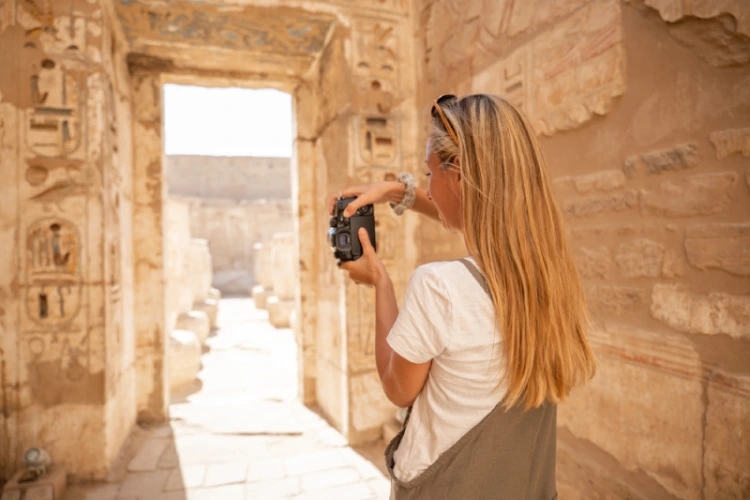
No trip to Egypt would be complete without visiting the Great Pyramids of Giza and the Sphinx. These monumental structures have stood the test of time, serving as a testament to the ingenuity and vision of ancient civilizations. Located on the outskirts of Cairo, these wonders are not just architectural feats but also symbols of Egypt's enduring legacy.
Standing before the pyramids, one can't help but feel a sense of awe and wonder. The sheer size and precision of these structures are mind-boggling, and each pyramid has its own story. The Great Pyramid, built for Pharaoh Khufu, is the largest and most famous, housing mysteries that continue to intrigue archaeologists and historians alike.
Equally captivating is the Sphinx, the enigmatic guardian of the Giza Plateau. With the body of a lion and the face of a pharaoh, it gazes eternally toward the rising sun. The combination of these iconic landmarks offers a glimpse into a world that was, and allows us to appreciate the achievements of a civilization that shaped history.
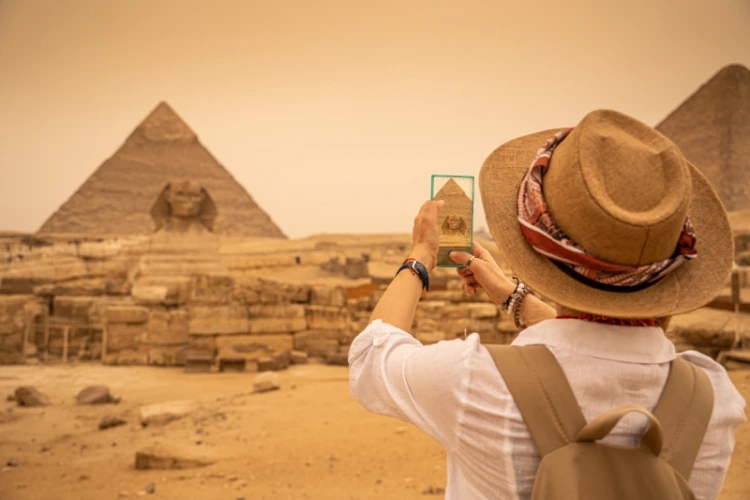
The Cairo Tower stands proudly as a symbol of modern Egypt. Offering panoramic views of the Cairo city, it is the perfect spot for travelers seeking a unique perspective of Cairo. Rising 187 meters above the cityscape, the tower provides a breathtaking vantage point that captures the essence of this bustling metropolis.
Visitors can take a high-speed elevator to the observation deck, where the entire city unfolds beneath you. From this height, the contrast between ancient and modern Cairo becomes strikingly apparent. On a clear day, you can even catch a glimpse of the distant pyramids, merging the past with the present in one sweeping view.
Dining at the revolving restaurant atop the tower is an experience not to be missed. As you savor traditional Egyptian cuisine, the cityscape slowly rotates, offering a dynamic view with each course. It's a perfect place to unwind and reflect on the day's adventures, making it a must-visit attraction during your Egyptian journey.
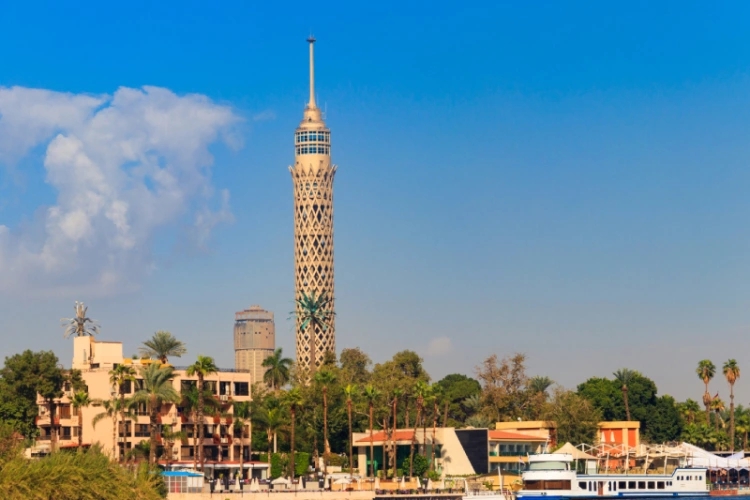
In the heart of Cairo, the Egyptian Museum houses one of the world's most extensive collections of ancient Egyptian artifacts. As we wandered through its halls, we were transported back in time, surrounded by treasures that tell the story of a civilization that has captivated imaginations for millennia.
The Egyptian Museum’s star attraction is the treasure of Tutankhamun, especially his iconic golden mask, admired for its beauty and detail. Discovered in 1922, these artifacts reveal the splendor of ancient Egyptian life and beliefs. Beyond Tutankhamun, the museum holds a vast collection of statues, jewelry, and mummies, each piece showcasing the skill and spirit of a great civilization. A visit here is a must for anyone eager to explore Egypt’s rich past.

As we journey to Luxor, the ancient city once known as Thebes, we find ourselves in a place steeped in history and grandeur. Luxor is often referred to as the "world's greatest open-air museum," and for good reason. The city is home to some of the most significant archaeological sites in Egypt, including the awe-inspiring Valley of the Kings.
The Valley of the Kings served as the final resting place for the pharaohs of the New Kingdom. Nestled in the Theban hills, this necropolis houses the tombs of legendary rulers, including the famous tomb of Tutankhamun. As we explored these ancient burial sites, we were struck by the intricate artwork and hieroglyphs that adorned the walls, each telling stories of the afterlife and the journey of the soul.
In addition to the Valley of the Kings, Luxor offers a wealth of other attractions, including the magnificent Temple of Hatshepsut and the Colossi of Memnon. Each site is a testament to the architectural and artistic achievements of ancient Egypt. As we explore Luxor, we're reminded of the enduring legacy of the pharaohs and the grandeur of a civilization that continues to inspire awe and admiration.

A visit to Luxor would be incomplete without exploring the majestic Temples of Karnak and Luxor. These ancient temples are among the most impressive architectural achievements of the ancient world, offering a glimpse into the religious and cultural life of ancient Egypt.
The Karnak Temple Complex, dedicated to Amun-Ra, is a breathtaking sprawl of temples, chapels, and pylons. Walking through the towering hypostyle hall, we were in awe of the scale and detail, each column tells a story of devotion and ancient power. Nearby, the Luxor Temple, built by Amenhotep III and expanded by Ramses II, stands gracefully along the Nile. Its elegant courtyards and sacred halls echo with the legacy of ancient rituals. Together, Karnak and Luxor are not just architectural marvels, but living monuments to the spiritual and cultural greatness of ancient Egypt.
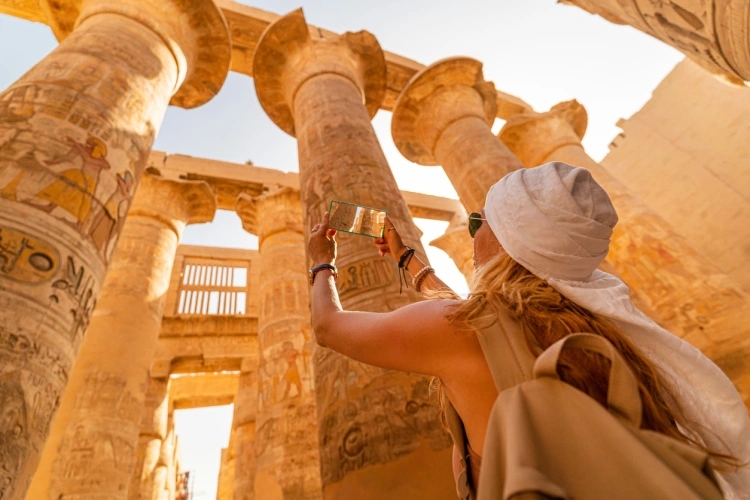
For a change of pace from Egypt's historical sites, the White Desert National Park offers a surreal and otherworldly experience. Located in the Western Desert, this natural wonder is famous for its chalk rock formations that have been sculpted by wind and sand over millennia. The landscape is a stunning contrast to the golden dunes that surround it, making it a must-visit on many Egypt Tours.
Exploring the White Desert feels like stepping onto another planet. Famous formations like the Mushroom and the Chicken offer stunning photo ops, especially at sunrise and sunset when light dances on the surreal landscape. Camping here is unforgettable, under a vast starry sky, the silence and beauty of the desert create a peaceful escape. It’s an inspiring retreat for anyone seeking solitude, nature, and a truly magical experience in the heart of Egypt.
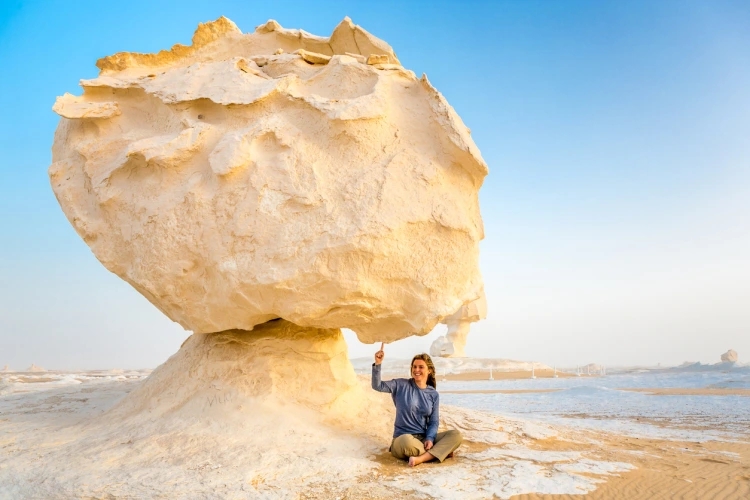
For those who love the sea, Egypt's Red Sea coast offers some of the best diving and snorkeling experiences in the world. Renowned for its crystal-clear waters and vibrant coral reefs, it is a haven for marine life enthusiasts and adventure seekers alike. The colors and diversity of the underwater world here are truly remarkable.
The Red Sea is home to a plethora of dive sites, each offering unique encounters with marine life. From the vibrant reefs teeming with fish to the hauntingly beautiful shipwrecks, there's something for every level of diver. Popular destinations like Sharm El Sheikh and Hurghada provide easy access to these underwater wonders.
Beyond diving, the Red Sea offers a range of activities for water lovers. Whether it's windsurfing, kiteboarding, or simply relaxing on a pristine beach, the coast is a paradise for those who love the sun and sea. The combination of natural beauty and aquatic adventure makes it a must-visit destination for any Egyptian itinerary.

Steeped in history and culture, the ancient city of Alexandria is a vibrant blend of past and present. Founded by Alexander the Great, it was once a center of learning and culture in the ancient world. Today, it retains its cosmopolitan charm, offering a unique perspective on Egypt's rich heritage.
In Alexandria, history and culture come alive. Visit the stunning Bibliotheca Alexandrina or the ancient catacombs of Kom El Shoqafa, then stroll the scenic Corniche along the Mediterranean. The city's mix of architecture, flavorful cuisine, and lively energy reflects its rich past and coastal charm. With vibrant markets, art galleries, and historic gems, Alexandria offers something for every traveler, inviting you to explore, discover, and be inspired.
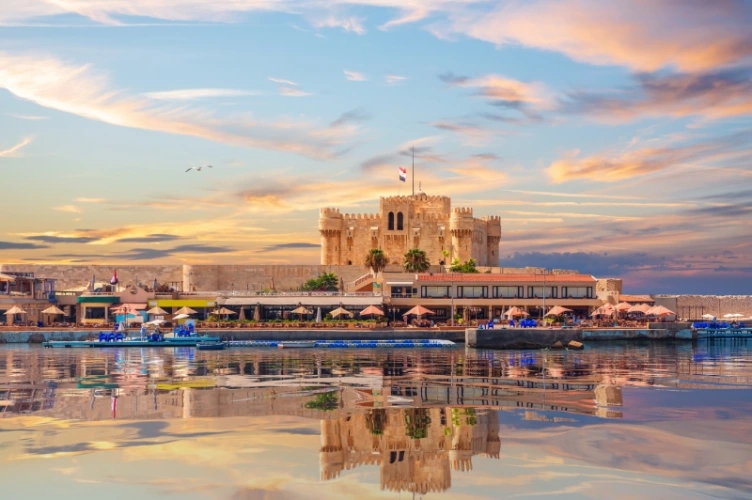
Aswan, located along the banks of the Nile, is a city of unparalleled beauty and cultural significance. Known for its stunning landscapes and warm hospitality, it serves as the gateway to some of Egypt's most captivating sites, including the Philae Temple. This island sanctuary, dedicated to the goddess Isis, is a must-see for any traveler.
The Philae Temple is a marvel of ancient engineering, relocated to its current location to save it from the rising waters of the Nile. The intricate carvings and majestic columns tell tales of devotion and mythology, offering a glimpse into the spiritual life of ancient Egypt. The temple's setting on an island provides a serene backdrop, enhancing its mystical allure.
Aswan itself is a city of contrasts, where traditional Nubian culture blends with modern influences. The bustling souks and vibrant markets offer a taste of local life, while the tranquil waters of the Nile invite relaxation and reflection. Whether exploring the islands or simply enjoying a felucca ride at sunset, Aswan is a place of beauty and inspiration.
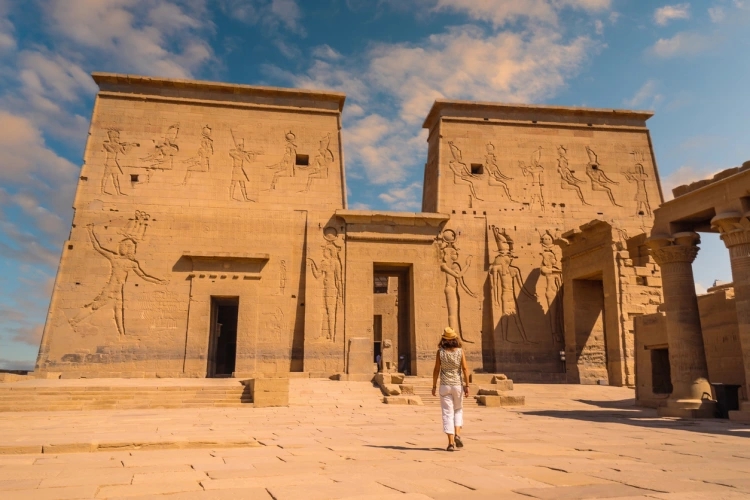
The Abu Simbel Temples are a crowning jewel of Egypt's ancient heritage. Carved into the cliffs of southern Egypt, these monumental structures were built by Pharaoh Ramses II to honor the gods and commemorate his reign. The grandeur and scale of the temples are breathtaking, drawing visitors from around the world.
The Great Temple of Abu Simbel, dedicated to Ra-Horakhty, Ptah, and Amun, is guarded by towering statues of Ramses II. Inside, stunning carvings portray his achievements and divine ties. Nearby, the Temple of Hathor honors Queen Nefertari with equal beauty. What makes Abu Simbel even more remarkable is its relocation in the 1960s to escape flooding from Lake Nasser, an incredible engineering feat. Visiting these temples is a powerful journey into Egypt’s ancient past, preserving its awe-inspiring legacy for generations to come.
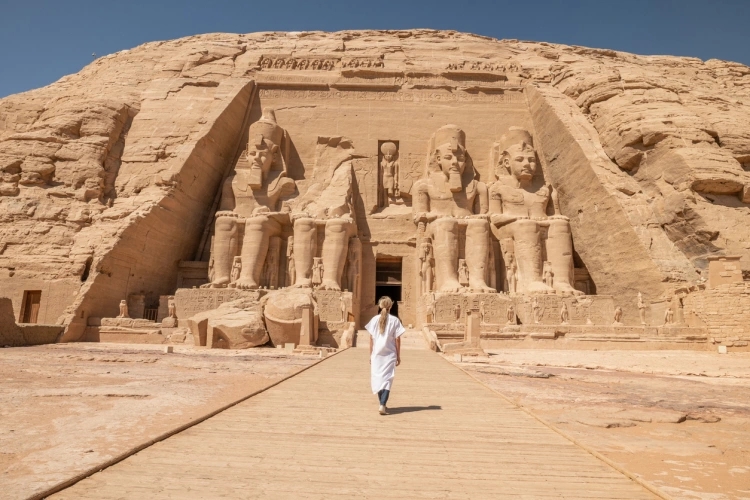
When planning a trip to Egypt, timing can make all the difference in your experience. The best time to visit is typically from October to April, when the weather is cooler and more pleasant for exploring outdoor attractions. During these months, the temperatures are ideal for sightseeing, and the crowds are more manageable.
Each season in Egypt has its charm. Winter offers cool, pleasant weather, while spring adds vibrant color to the scenery. October and April are ideal for mild temperatures and fewer crowds, perfect for sightseeing or relaxing by the Red Sea. Summer, though hot, brings lively festivals and fewer tourists, offering a more local experience. Whenever you visit, Egypt promises unforgettable adventures and lasting memories.
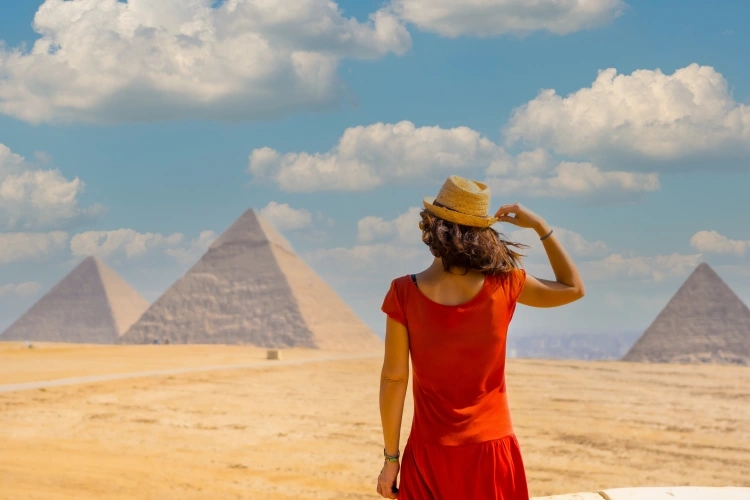
As we conclude our journey through the top 10 attractions in Egypt, it's clear that this land of wonders offers something for every traveler. From the timeless beauty of the pyramids to the vibrant underwater worlds of the Red Sea, Egypt is a destination that captivates the heart and soul. The stories and experiences found here are as diverse as the landscapes, inviting exploration and discovery at every turn.
Embark on your journey with Egypt Tours and connect with Egypt’s rich heritage. Discover ancient mysteries and stunning landscapes for memories that last a lifetime.
Q1. What are the top attractions in Egypt?
The Great Pyramids of Giza, the Sphinx, the Egyptian Museum, the Karnak and Luxor Temples, Abu Simbel, the Temple of Kom Ombo, the Temple of Edfu, the White Desert, Alexandria, and the Red Sea resorts are top must-see sites.
Q2. When is the best time to visit Egypt to explore these attractions in Egypt?
The best time is from October to April when the weather is cooler and more comfortable for sightseeing.
Q3. Is it safe to travel to tourist attractions in Egypt?
Yes, Egypt’s main tourist areas are generally safe. It’s advised to follow local guidelines, use reputable tour operators, and stay updated on travel advisories.
Q4. What should I pack for visiting attractions in Egypt?
Pack lightweight clothing, comfortable walking shoes, sunscreen, a hat, water bottle, and modest attire for religious sites.
Q5. What is the entrance fee for Egypt’s major attractions?
Entrance fees vary by site; for example, the Pyramids and Egyptian Museum have separate fees. It’s good to check updated prices online or through your tour operator.
Q6. How can I avoid crowds at popular attractions in Egypt?
Visiting early in the morning or late afternoon helps avoid peak crowds and heat. Booking private tours can also offer a more personalized experience.
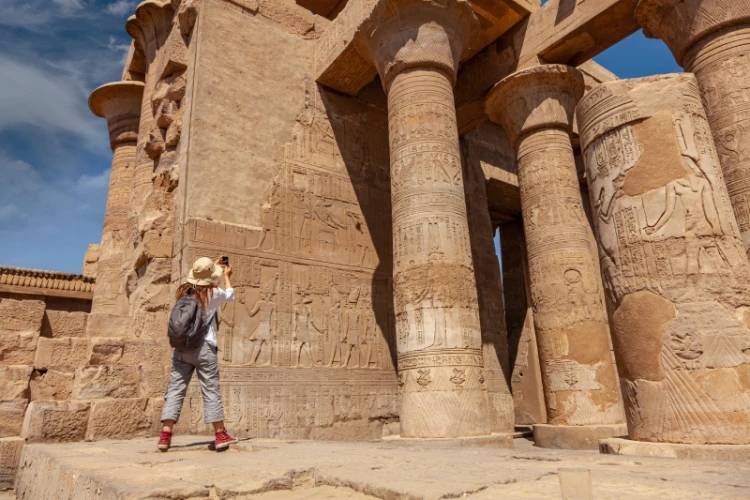

© Copyright 2025 Get Egypt Tour. All rights reserved.